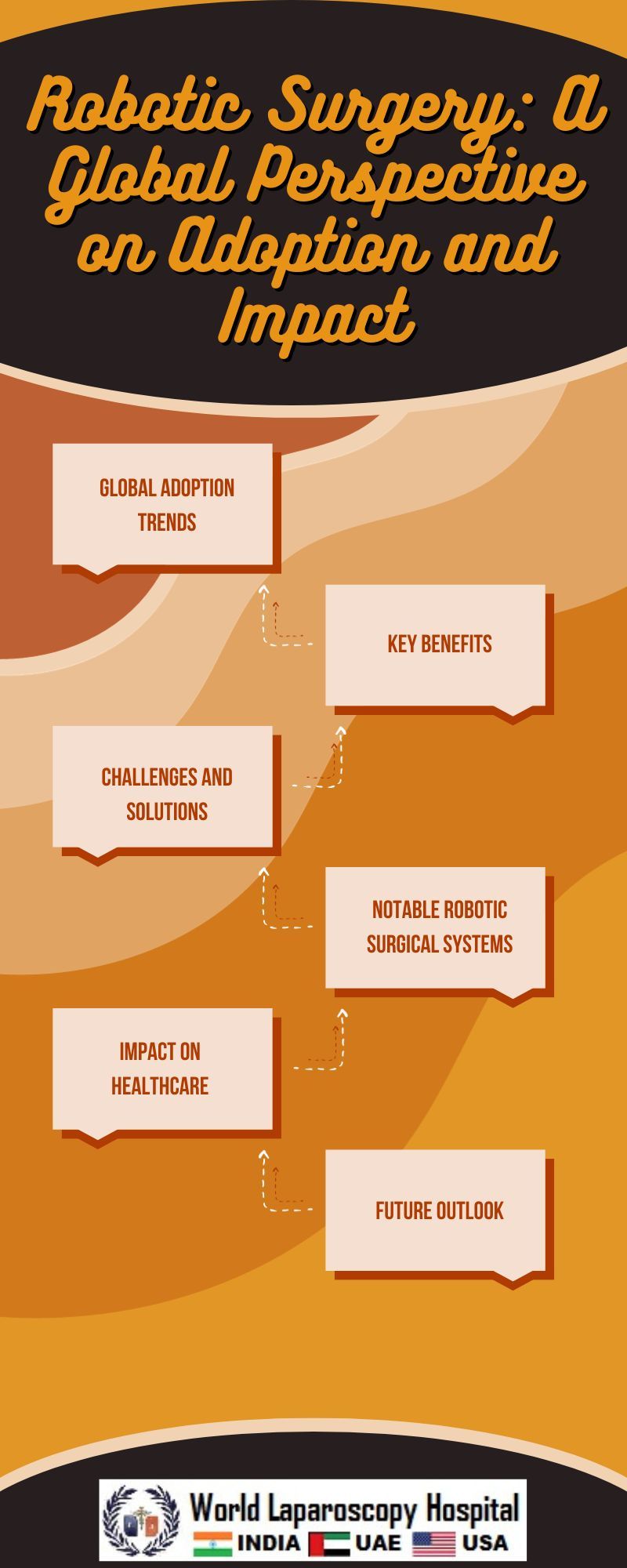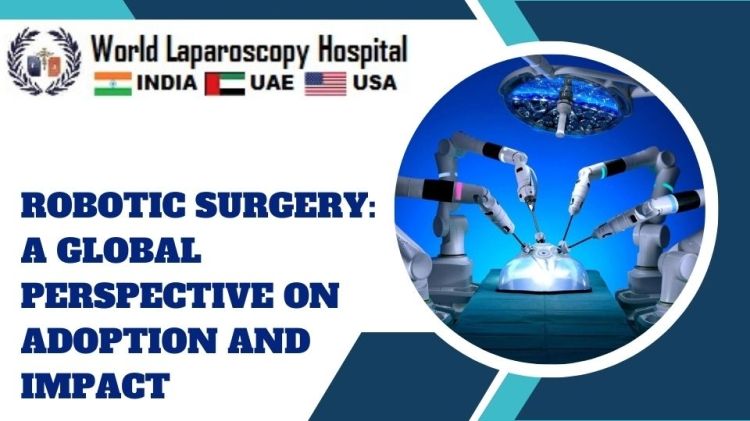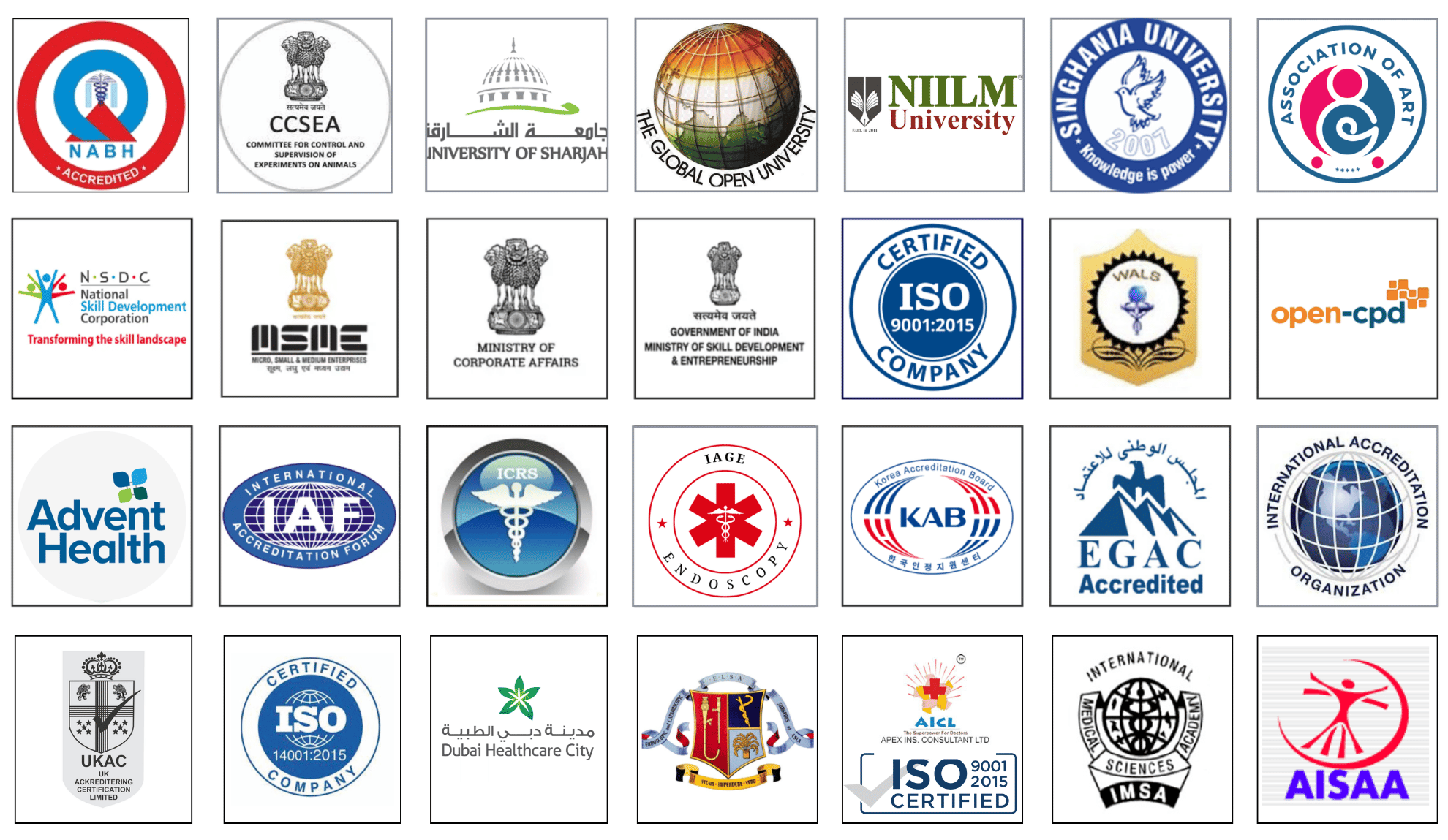Robotic Surgery: A Global Perspective on Adoption and Impact
Introduction
Robotic surgery has emerged as a transformative force in the field of healthcare, reshaping the landscape of surgical procedures across the globe. This article explores the adoption and impact of robotic surgery on a global scale, shedding light on the advancements, challenges, and the overall influence of this technology on patient care and healthcare systems.

The Evolution of Robotic Surgery
The journey of robotic surgery began with the development of the da Vinci Surgical System in the late 20th century. Initially designed for military applications, the system was later adapted for medical use. The integration of robotics into surgery aimed to enhance precision, provide better visualization, and enable minimally invasive procedures. Over the years, technological advancements have refined these robotic systems, making them indispensable tools in modern operating rooms.
Global Adoption Trends
Robotic surgery has experienced significant adoption worldwide, with various countries incorporating these systems into their healthcare infrastructure. In developed nations, high-income healthcare settings have been quick to embrace robotic-assisted procedures, while developing countries are gradually integrating this technology to improve surgical outcomes. Factors influencing adoption include economic considerations, infrastructure development, and training programs for medical professionals.
Impact on Surgical Procedures
The impact of robotic surgery on traditional surgical procedures is profound. The enhanced precision and dexterity offered by robotic systems allow surgeons to perform complex surgeries with greater accuracy. Procedures that were once challenging or impossible with conventional methods are now routinely conducted using robotic assistance. Examples include prostatectomies, gynecological surgeries, and cardiac interventions, where the benefits of minimally invasive techniques are particularly evident.
Improved Patient Outcomes
One of the primary driving forces behind the global adoption of robotic surgery is the promise of improved patient outcomes. Minimally invasive approaches reduce trauma to the body, resulting in shorter hospital stays, quicker recovery times, and reduced postoperative pain. The precision afforded by robotic systems minimizes the risk of complications, contributing to better overall patient satisfaction and long-term health.
Challenges and Criticisms
Despite the promising advancements, robotic surgery is not without challenges and criticisms. High initial costs associated with acquiring and maintaining robotic systems pose economic barriers for some healthcare institutions. Concerns about the learning curve for surgeons, potential over-reliance on technology, and ethical considerations related to patient safety also contribute to the ongoing debate surrounding robotic surgery.
Global Disparities in Access
While robotic surgery has made significant strides in many developed nations, global disparities in access remain a critical issue. Low- and middle-income countries often face challenges in adopting these technologies due to financial constraints and inadequate infrastructure. Bridging this gap requires concerted efforts from the international community, focusing on technology transfer, training programs, and collaborative initiatives to make robotic surgery accessible worldwide.
Future Trends and Innovations
The future of robotic surgery holds exciting prospects with ongoing research and innovations. Advancements in artificial intelligence, haptic feedback, and telesurgery are poised to further enhance the capabilities of robotic systems. Additionally, the development of smaller, more versatile robots may expand the range of surgical procedures amenable to robotic assistance, paving the way for a new era in healthcare.
Ethical Considerations
As robotic surgery continues to evolve, ethical considerations become increasingly important. Ensuring patient safety, maintaining surgeon proficiency, and addressing the socio-economic impact of these technologies are paramount. Ethical frameworks must be established to guide the responsible development and deployment of robotic surgical systems, safeguarding both patients and the integrity of medical practice.
Conclusion
Robotic surgery has undeniably transformed the landscape of modern healthcare, offering unprecedented benefits to patients and surgeons alike. The global adoption of robotic systems reflects a shared recognition of the potential to revolutionize surgical procedures and improve overall healthcare outcomes. As we navigate the evolving landscape of robotic surgery, it is crucial to address challenges, bridge access disparities, and uphold ethical standards, ensuring that this technological revolution benefits individuals and societies across the world.






